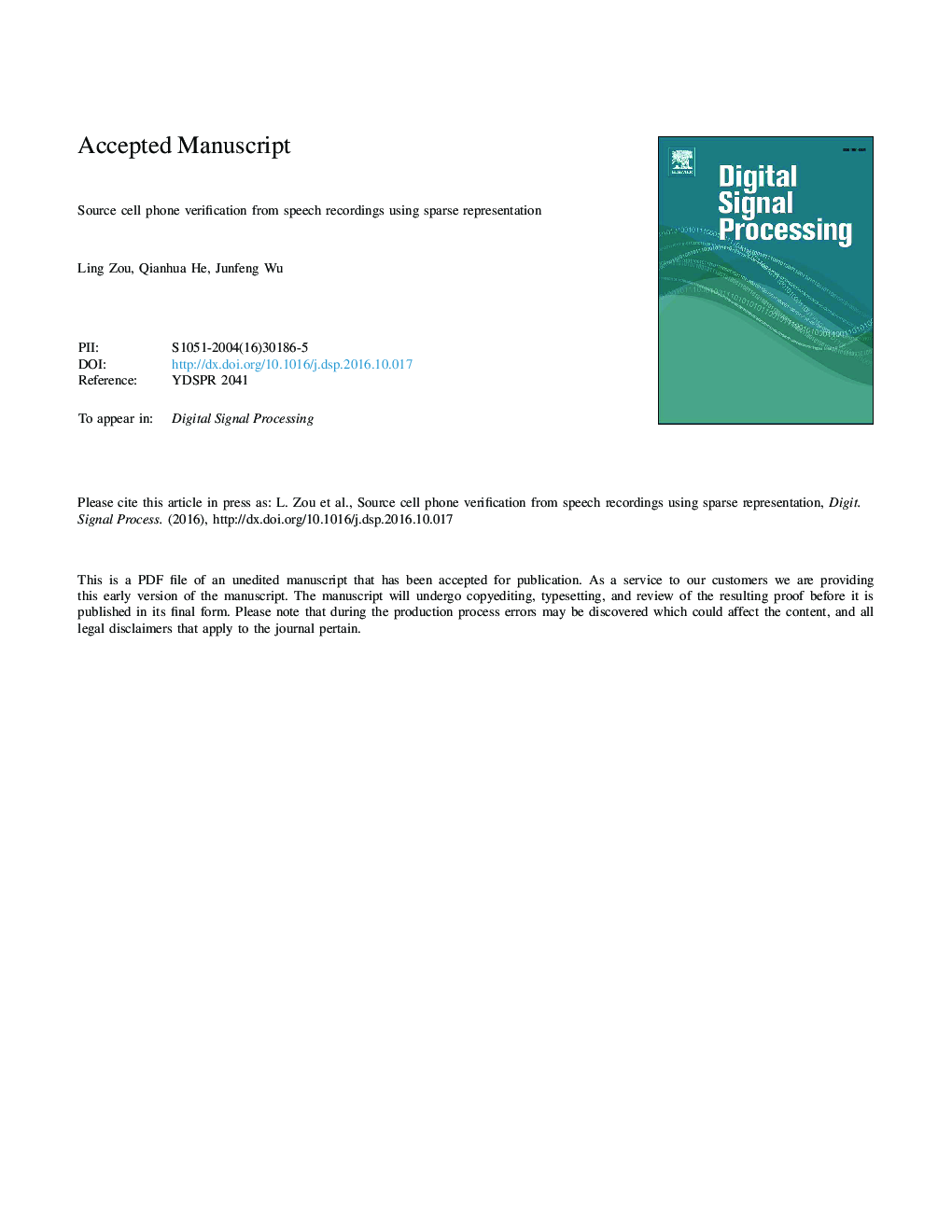| Article ID | Journal | Published Year | Pages | File Type |
|---|---|---|---|---|
| 4973894 | Digital Signal Processing | 2017 | 21 Pages |
Abstract
Source recording device recognition is an important emerging research field in digital media forensics. The literature has mainly focused on the source recording device identification problem, whereas few studies have focused on the source recording device verification problem. Sparse representation based classification methods have shown promise for many applications. This paper proposes a source cell phone verification scheme based on sparse representation. It can be further divided into three schemes which utilize exemplar dictionary, unsupervised learned dictionary and supervised learned dictionary respectively. Specifically, the discriminative dictionary learned by supervised learning algorithm, which considers the representational and discriminative power simultaneously compared to the unsupervised learning algorithm, is utilized to further improve the performances of verification systems based on sparse representation. Gaussian supervectors (GSVs) based on MFCCs, which have shown to be effective in capturing the intrinsic characteristics of recording devices, are utilized for constructing and learning dictionary. SCUTPHONE, which is a corpus of speech recordings from 15 cell phones, is presented. Evaluation experiments are conducted on three corpora of speech recordings from cell phones and demonstrate the effectiveness of the proposed methods for cell phone verification. In addition, the influences of number of target examples in the exemplar dictionary and size of the unsupervised learned dictionary on source cell phone verification performance are also analyzed.
Related Topics
Physical Sciences and Engineering
Computer Science
Signal Processing
Authors
Ling Zou, Qianhua He, Junfeng Wu,
